
Around the world, learning to swim is no less of a milestone than learning to ride a bike or tying your shoes. Accordingly, swim schools benefit from a steady pool ( ͡° ͜ʖ ͡°) of interested consumers turned new clients. This has led many fitness-based centers to make the most of their facilities by venturing into offering swim lessons as a source of additional revenue.
Running a swim school comes with more challenges than initially meets the eye. Whether your business is an independent swim school or a side business venture at a traditional fitness club or leisure center, executing the intricate needs swim lessons requires great organization and managerial strategy.
This extends from selecting great instructors, maintaining organized class schedules, delivering impactful lessons, to building strong relationships with students and parents alike. Swim schools also must be prepared to handle the ever-changing nature of their business: influxes of new customers, irregular client schedules, student changeover into new classes or levels, etc.
Many management platforms are not created with courses intended for children in mind, and thus, do not have the capabilities to easily cater to common needs of a parent or guardian. These needs only increase in complexity as swim schools scale up over time.
This article will outline the resources, policies, and tools needed for a swim school business model to succeed.
Hiring the Right Staff

Like any client-facing business, your swim school will only be as reputable as the teachers and staff you hire. It takes a special person to work well with young children, especially those who have completed proper training in water safety and first aid. Swim instructors need to be strong swimmers and effective communicators that can translate effectively to their young audience. Often times, swim instructors will have backgrounds in childcare or a related field.
Swim lessons should be crafted to balance instruction and technique in fun innovative ways for children to practice. Instructors should be knowledgeable enough in early child education to create lessons and assessments that gauge student progress, but are balanced with fun, games, and opportunities for socialization.
As classes become more advanced, instructors should obviously have the swimming expertise to help their students excel and advance in their proficiencies. They should also be adept in communicating with parents as well as basic management responsibilities tied to the school’s operation.
Establish Swim School’s Unique Policies
Swim schools business models have the flexibility to operate in different ways. Some may be as fluid as schedules that change every week based on enrollment, others as rigid as recurring classes with committed students. Regardless of your swim school’s structure, creating and enforcing uniform policies are crucial to your business’ success. Some basics to consider:
Payment Policies
Swim schools must create consistent billing schedules that complement their business models. This can range from paying in full upfront, segmenting payments through the course by month or weekly period, or pay-as-you-go per lesson. Each model offers benefits and drawbacks: clients may be deterred by a large upfront payment while multiple payments opens staff to inevitable problems, like late payments or disputes over class cancellations or refunds (reference cancellation policies below).
Upfront payments for an entire swim course should provide for refunds or make-up classes if a student misses classes. Likewise, segmented pay schedules should have clearly stated applicable late fees, class cancellation warning periods, etc.
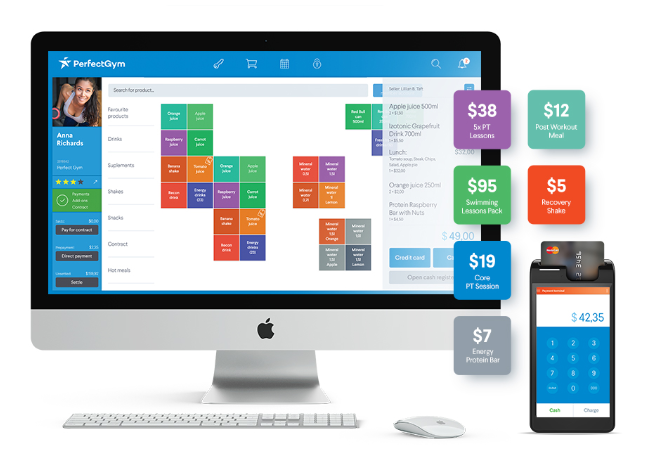
Swim schools can best enforce its payment policies by providing flexible and convenient digital payment options. Offering as many convenient payment methods removes unnecessary burdens for parents. Automated billing also guarantees payment is received without any additional stress on your staff.
If payment disputes arise, recurring billing procedures put the responsibility on the client to proactively discuss your make-up or cancellation payment policies. Client portals are a great way for clients to take control of their payments autonomously instead of adding to responsibilities of your swim school’s management in person.
Cancellation/Make Up Policies
Life happens, especially for typical swim student ages of 8 and younger. Therefore, enforcing firm guidelines for class cancellations is essential for swim schools. You should:
- Establish a clear time frame to cancel class attendance without penalty (24 hours, 12 hours, etc).
- Set protocols for no-show students or last minute cancellations
- Clearly state student options for proper class cancellations. For prepaid students, will they receive refunds or attend a make-up class, etc
- If you institute make-up classes, ensure you have appropriate options that work for your clients’ schedules and swimming level.
Client Correspondence and Progress Reports
Like any client-facing business, maintaining strong relations and communication with customers is imperative. At swim schools, client correspondence means open lines of communication for member management needs (payments, class cancellations etc.) as well as reporting student progress updates. The first and most obvious way to organize client communication is to make sure that every student also has parent contact information available on the same member profile. Swim schools can then decide which medium (email, phone call, client portal, etc) is best for them to use for outreach.
Many parents may not have the opportunity to attend children’s swim lessons or talk directly with their instructors. Establishing clear communication lines and progress report schedules are great ways to impress your clients with your service and personal attention. Both parties can benefit greatly from instructors using a simple platform to easily provide student feedback after classes.
What’s more, many of these communicative measures can be easily automated. Swim school news or announcements can be easily sent to every enrolled student or on an individual level. On a group or class level, instructors and staff can send class summaries or important information via any preferred channel to all student families after lessons.
Emails can also be set up to automatically notify parents about important class or student updates: when a student enrolls, if a student leaves a group, change of student class level, change of class location etc.

Another great and simple way to maintain outstanding client relations is by using a client portal. Client portals are a simple platform for instructors to keep parents informed about their children’s individual progress or feedback. The notes section (highlighted above) can also be used for anything from individual progress reports or specific class announcements, like upcoming assessments or class parties. It can also be used to notify parents of any behavioral incidents that may arise during classes.
Cohesive Platform for Swim School Scheduling: Organized Group and Class Segmentation
Most swim schools follow a similar format of categorizing swim lessons into different levels (groups), and then further segmenting those levels into classes. Swim school groups and levels tend to be used interchangeably to define the swimming proficiency, and then swim schools will have a number of different classes per group per week.
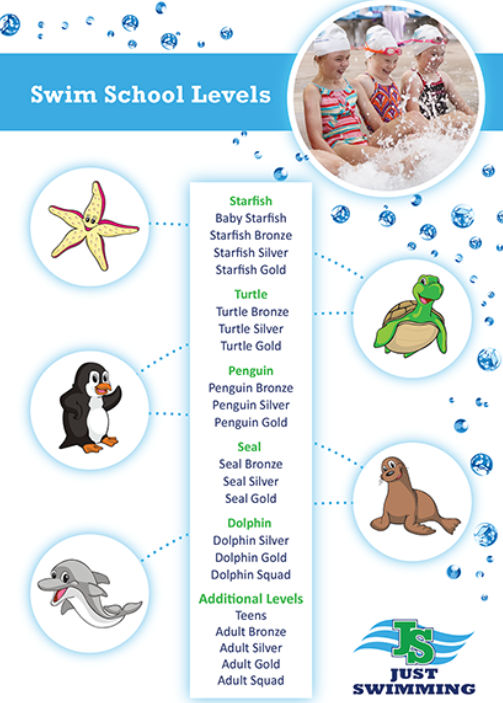
For example, a school may offer four different groups/levels, and then divide each level into five different classes that meet throughout the week. Levels in the above example are denoted by different animals: Starfish, Turtles, Penguins, Seals, and Dolphins and then into different colors to signify classes.
On the management side, these levels and classes can be easily classified in the system by different names, color-blocking, etc. Once created, schedules should be customizable to add as many or as few classes per group level as necessary, depending on enrollment and levels needs of your clients.
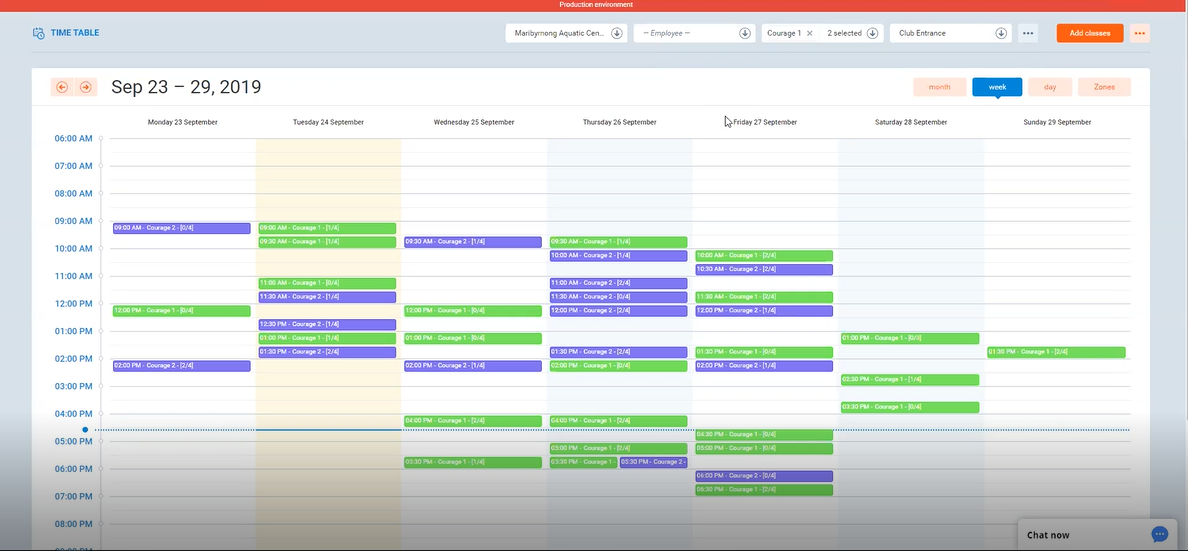
Groups can be established based on mandatory skill sets of swimmers to ensure child safety and appropriate placement. Groups should also be flexible enough to support consistent student change-over: students changing groups or levels depending on a wide range of preferences.
Simple Class Schedule Creation:
Swim School Schedule creation should include flexible options to select the:
- Length of course (how many weeks and months)
- Time class begins and ends
- Duration of class
- Prerequisite skill level required
- Number of class spot openings
- Age requirement (if applicable)
Once created, schedules should be easy for staff members to navigate in your swim school management system. This can be done through various labelling options, like assigning Group levels a particular color, and different classes by images or symbols. Schedules should also be easily scaffolded with different search parameters: like by student, class time, level, etc.

Streamlining the most common management responsibilities of a swim school is a major advantage. For example, if a parent wants to enroll their children who are at two different ages and levels at classes that take place at the same time, staff can easily apply filters to find available time slots that accommodate them. These filters can also help quickly navigate to class cancellations, scheduling make up lessons, class attendance, etc.
Class Schedule Management
Registering students or enrolling in classes should be possible through various convenient channels. In addition to front desk/in-person registration, Client portals can allow parents to input their children’s information and independently view class schedules and available spots.
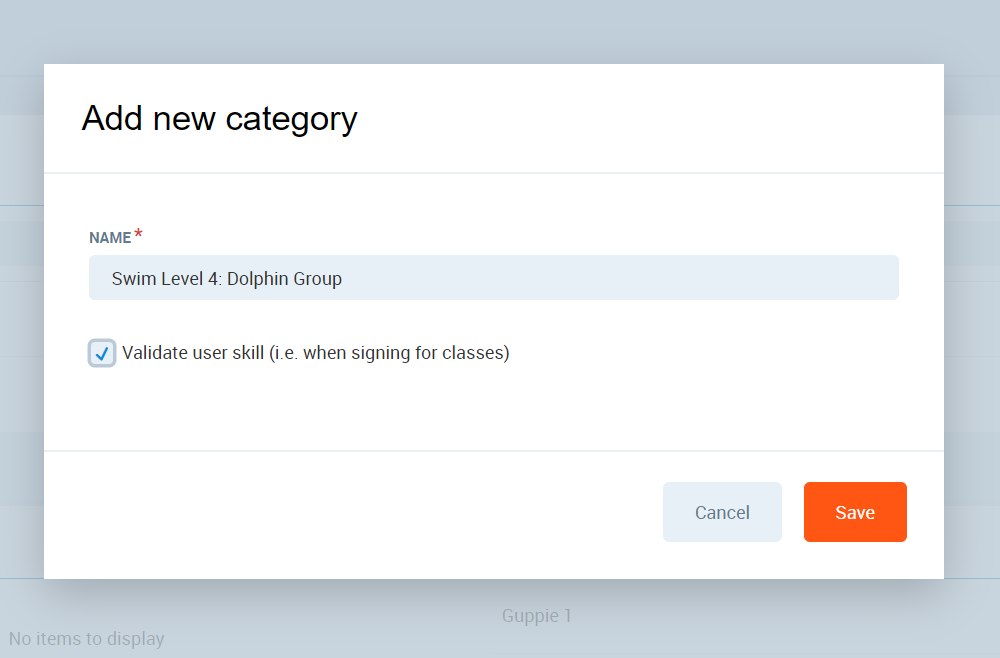
However, swim school enrollment tends to experience problems when parents are responsible for selecting the appropriate class level for their children. Swim schools can combat this by restricting enrollment procedures both online and in person. First, restrictions can be put in place on sign-up portals to ensure that staff can properly assess the swim student’s skill level before enrollment is complete
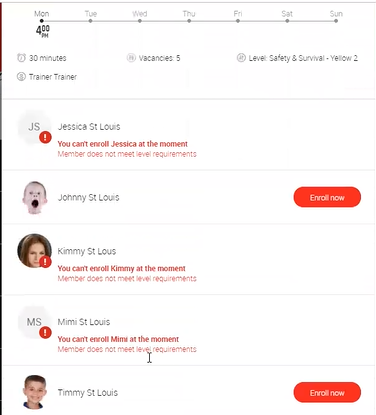
This can be accomplished by requiring:
- parents to complete a survey
- a basic swim test prior to enrollment
Enrollment should be structured to register a child with associated parent account/information on the same profile.
Once enrolled, swim school management provides a simple platform to access all relevant information about the students, including membership details, course results, payments, attendance and schedules to help each semester run as smoothly as possible.
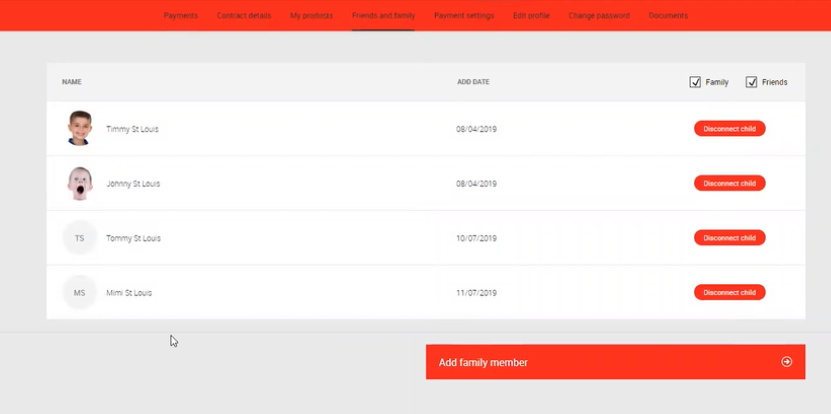
Member management tools can also tie one parent to more than one child or to a preexisting gym account. Keeping these accounts together will negate unnecessary headaches in the future from finding and pairing separate member profiles and pertinent information.
Ability to Handle Range of Common Swim School Problems
Swim schools are often subject to a series of uncontrollable circumstances that can impact classes or schedule. Among these include:
- Weather Conditions
- Pool maintenance technical issues
- Sanitation protocols
- Medical emergencies
These unfortunately common liabilities demonstrate swim schools’ need to be able to easily notify of class cancellations at any time. Using a sophisticated management platform can help swim schools disperse pertinent emails in advance to warn about these circumstances or class cancellations.
Additionally, in case an entire class needs to be rescheduled, your online class schedule should allow you to move the time frame for just the one-time occasion without affecting the rest of the regularly scheduled classes.
Closing Thoughts

Swim schools are a great business venture, both as stand-alone schools or as an auxiliary option for fitness facilities. Offering swim lessons can bring a new sense of community to your fitness or leisure center while diversifying your revenue streams and clientele bases. Although nothing can outweigh the importance of hiring the perfect staff and executing great lessons, relying on a strong swim school management system can make a huge difference in optimizing your day-to-day operations.
By using technology to minimize common stressful backend procedures, swim school staff and instructors can allocate their time to best helping their students achieve one of their most cherished childhood milestones with flying colors.